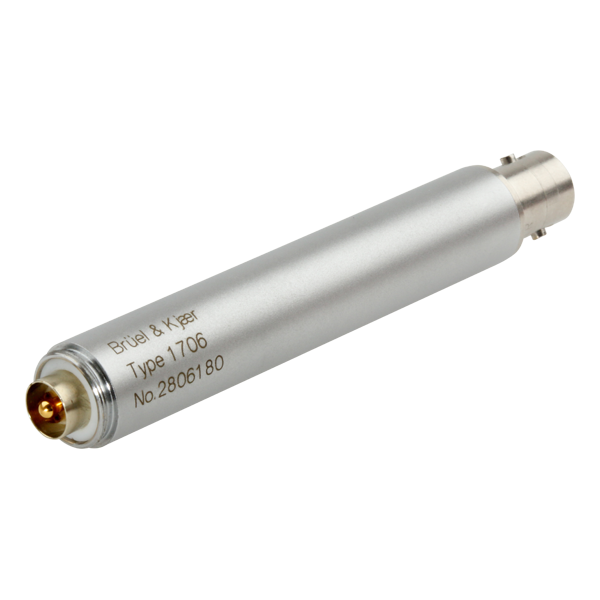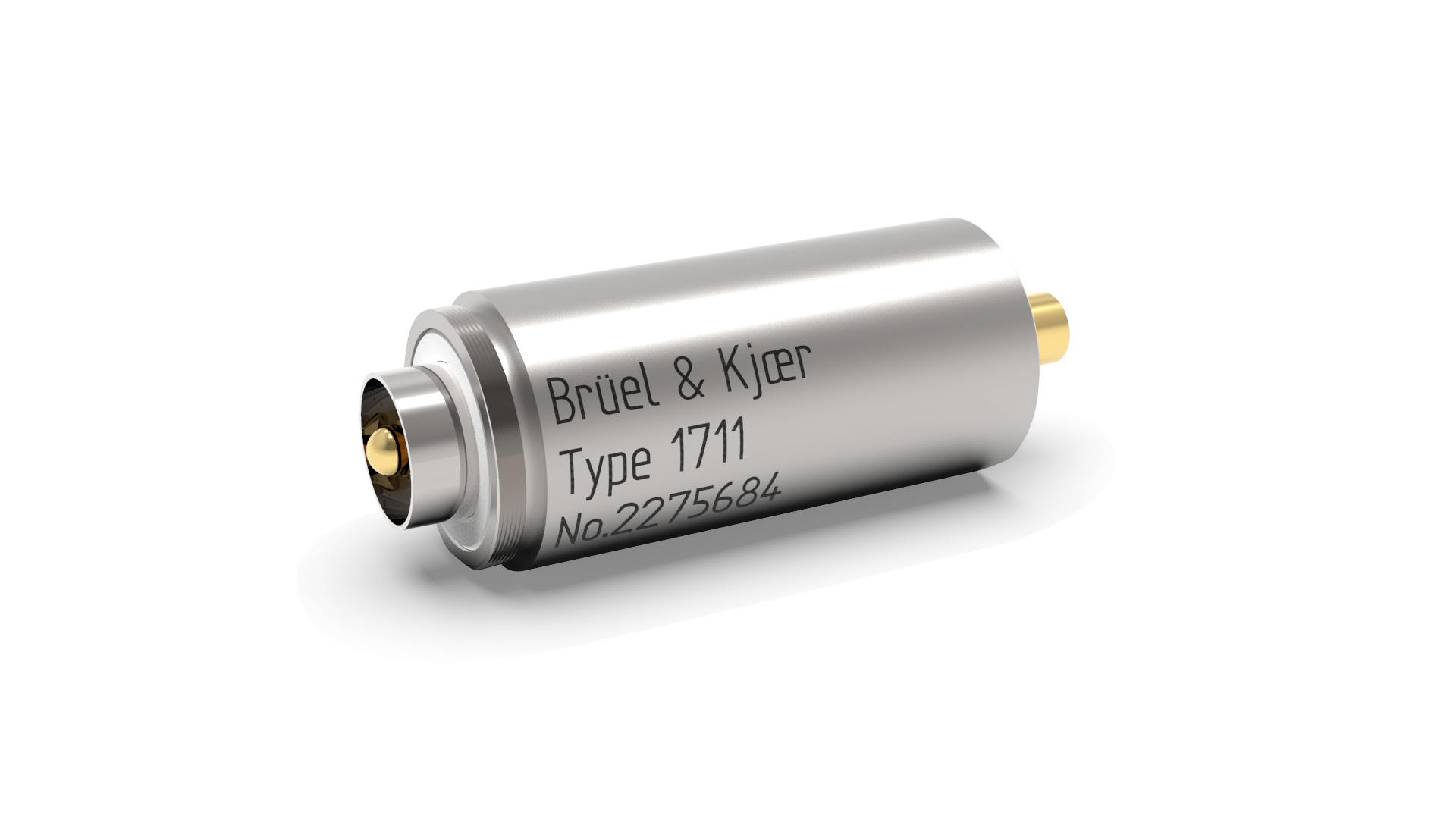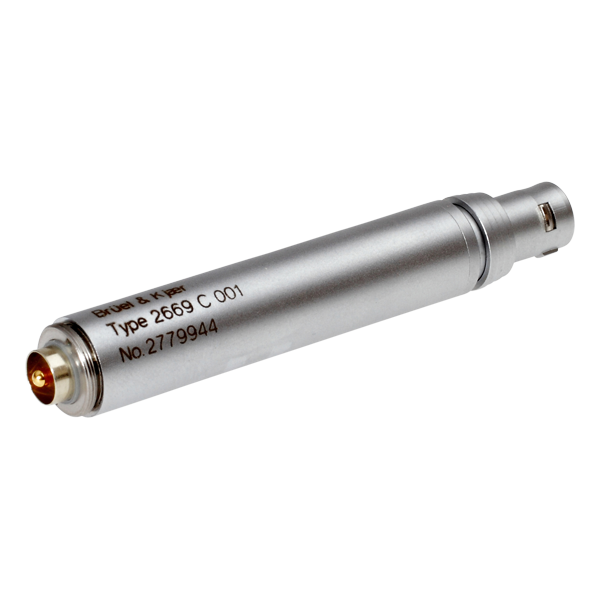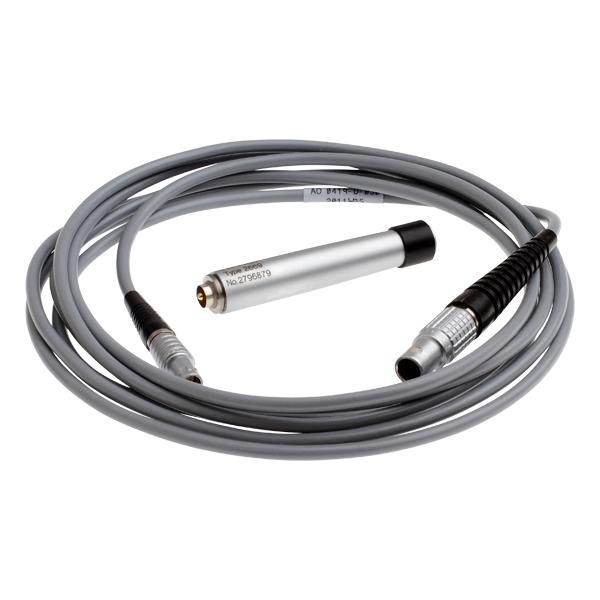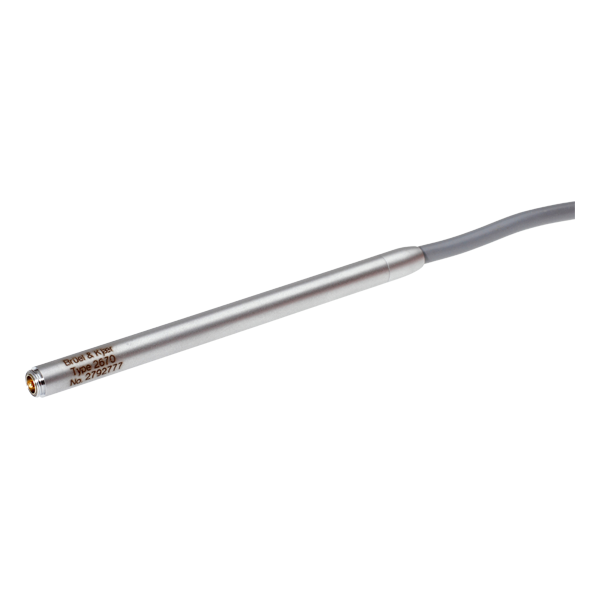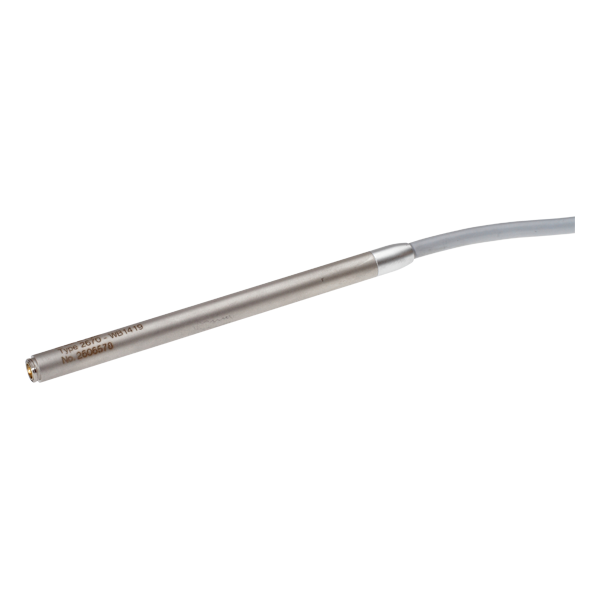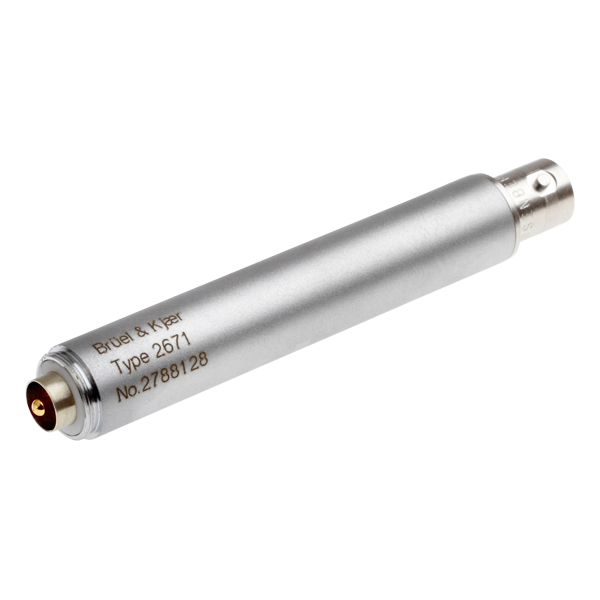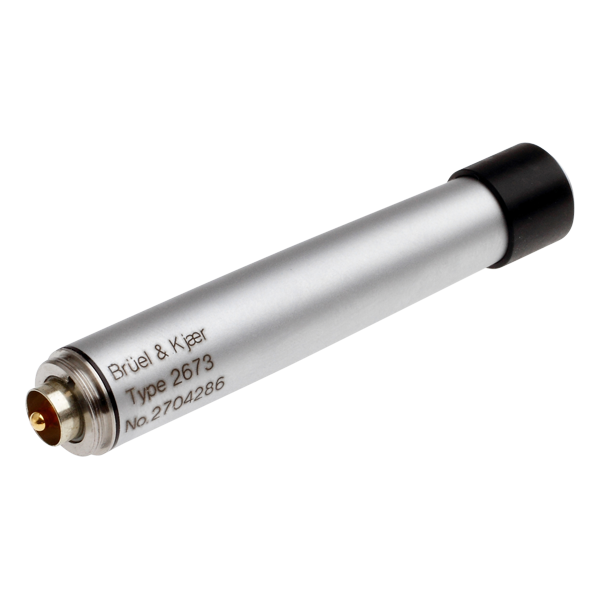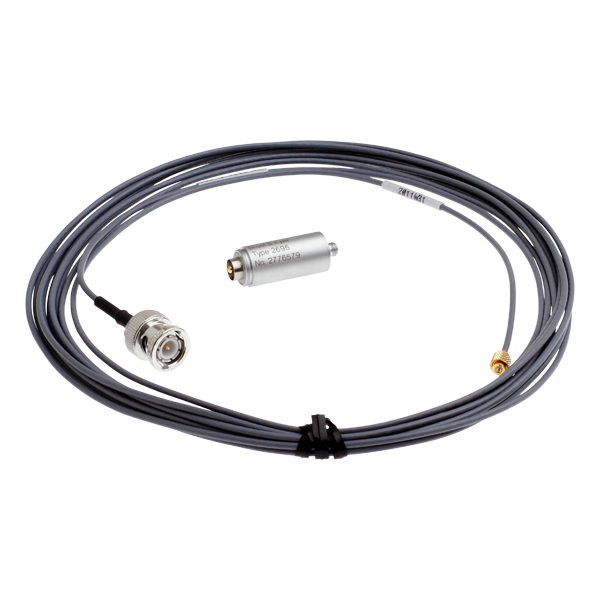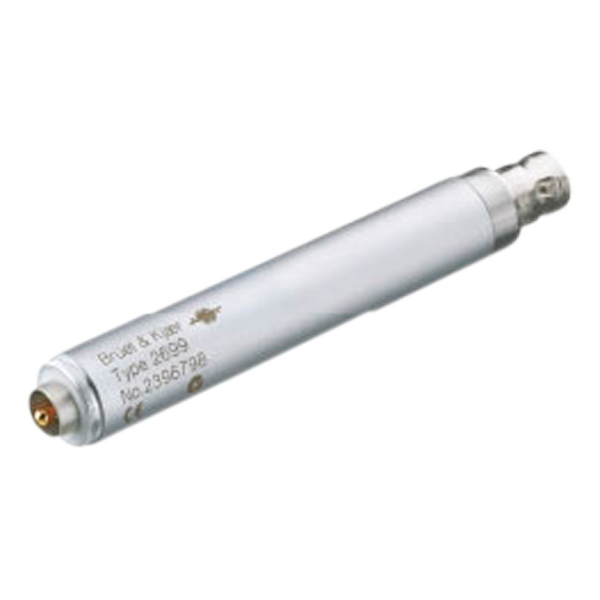Preamplificatori microfonici
What is a Preamplifier-
MODELLO 1706
Preamplificatore per microfoni CCLD ad alta temperatura
Progettato per effettuare misure acustiche a temperature fino a 125°C (257°F) con un modulo avente ingresso a corrente costante (Constant Current Line Drive - CCLD).
- Optimised for : CCLD
- Connector at preamplifier : BNC
- Polarization voltage support : No
- Frequency range : <minmax min="20" max="50000" />
- Attenuation : -0.35
-
TYPE 1711
Short, ½-inch CCLD microphone preamplifier
Enables you to make acoustical measurements in confined spaces.
- Optimised for : Measuring in confined space
- Connector at preamplifier : SMB
- Polarization voltage support :
- Frequency range : 20 to 20000
- Attenuation : 0.2 dB (typical)
-
MODELLO 2669-B
Preamplificatore microfonico da ½ pollice, conico, incluso cavo AO-0428, connettore Brüel & Kjær
Progettato per operare in un'ampia gamma di temperature, umidità e altre condizioni ambientali.
- Optimised for : Acoustical
- Connector at preamplifier : LEMO 0B, 7-pin
- Polarization voltage support : Yes
- Frequency range : 3 to 200000
- Attenuation : < 0.35
-
MODELLO 2669-C
Preamplificatore microfonico da ½ pollice, cilindrico, connettore LEMO 1B, senza cavo
Progettato per operare in un'ampia gamma di temperatura, umidità e altre condizioni ambientali
- Optimised for : Cylindrical
- Connector at preamplifier : LEMO 1B, 7-pin
- Polarization voltage support : Yes
- Frequency range : 3 to 200000
- Attenuation : < 0.35
-
MODELLO 2669-L
Preamplificatore per microfono da ½ pollice, conico, cavo incluso, connettore LEMO a 7 poli
Questo preamplificatore microfonico da ½" opera in un'ampia gamma di temperatura, umidità e altre condizioni ambientali.
- Optimised for : Acoustical
- Connector at preamplifier : LEMO 0B, 7-pin
- Polarization voltage support : Yes
- Frequency range : 3 to 200000
- Attenuation : < 0.35
-
MODELLO 2670
Preamplificatore per microfono da ¼ di pollice, cavo integrato da 2 m con spina LEMO a 7 poli
Progettato per operare in un'ampia gamma di temperature, umidità e altre condizioni ambientali.
- Optimised for : Phase
- Connector at preamplifier : Fixed (2 m)
- Polarization voltage support : Yes
- Frequency range : 15 to 200000
- Attenuation : <0.4
-
MODELLO 2670-WB-1419
Preamplificatore per microfono da ¼ di pollice, cavo integrato da 2 m con spina LEMO a 7 poli
Progettato per operare in un'ampia gamma di temperature, umidità e altre condizioni ambientali. Ottimizzato per misurazioni di airbag.
- Optimised for : Airbag
- Connector at preamplifier : Fixed (2 m)
- Polarization voltage support : Yes
- Frequency range : 1 to 100000
- Attenuation : 11
-
MODELLO 2671
Preamplificatore microfonico CCLD per microfoni prepolarizzati da 1/2 pollice, senza cavo
Progettato per essere utilizzato in una vasta gamma di condizioni ambientali e in spazi ristretti.
- Optimised for : CCLD
- Connector at preamplifier : BNC
- Polarization voltage support :
- Frequency range : 20-50000
- Attenuation : <0.35
-
MODELLO 2673
Preamplificatore microfonico da ½ pollice con possibilità di inserire la tensione
Progettato per consentire la calibrazione di microfoni a condensatore da ½" e 1" con la tecnica di inserzione della tensione
- Optimised for :
- Connector at preamplifier : LEMO 0B, 7-pin
- Polarization voltage support : Yes
- Frequency range : 3 to 200000
- Attenuation : < 0.05
-
MODELLO 2695
Preamplificatore CCLD corto da ½ pollice
Progettato per misure acustiche con un modulo d'ingresso CCLD. Al preamplificatore possono essere collegati microfoni prepolarizzati.
- Optimised for : Short CCLD
- Connector at preamplifier : 10 – 32 UNF
- Polarization voltage support :
- Frequency range : 20 to 50000
- Attenuation : < 0.2
-
MODELLO 2699
CCLD, Preamplificatore microfonico ponderato A
Progettato per eliminare i disturbi a bassa frequenza causati dal “body boom” o dal “road noise” (rumori a bassissima frequenza da strada e rotolamento pneumatici) durante le misurazioni in auto
- Optimised for : A-weighted CCLD
- Connector at preamplifier : BNC
- Polarization voltage support :
- Frequency range : A-weighted
- Attenuation : < 0.3

TABLE OF CONTENTS
1. Preamplifiers for condenser microphones
2. Classical Preamplifiers
3. CCLD Preamplifiers
4. Selecting a Preamplifier
5. Preamplifier Types
PREAMPLIFIERS FOR CONDENSER MICROPHONES
A condenser microphone must be combined with a preamplifier to provide impedance conversion, some filtering, and the capability to drive relatively long cables without significant signal degradation.
Our preamplifiers are designed in accordance with two principles, referred to as Classical Preamplifiers, and CCLD Preamplifiers. Each provide their own special set of features:
CLASSICAL PREAMPLIFIERS
The classical preamplifier has an easy to understand concept. It is basically a unity gain amplifier with extremely high input impedance and very low input capacitance.
- The supply voltage can be either ±15 V DC or a single 80 V DC.
- The output signal has its own separate wire, as do the polarization and CIC voltage.
- Pin 5 is often used for transmission of TEDS data (so called Class II TEDS).
- Charge Injection Calibration (CIC) is performed by injecting a signal on pin 1 of the LEMO connector.
CCLD Preamplifiers
Despite its origin in the vibration transducer world, the Constant Current Line Drive (CCLD) principle is increasing in popularity in the area of sound and measurement applications. Different manufacturers market transducers using the CCLD principle under different names.
The benefit of CCLD is that the same wire is used for both the signal and the supply current. Using TEDS Class I even the TEDS data can be transmitted over that same wire (using a level controlled electronic switch as shown in the figure below).
Classical vs. CCLD Preamplifier
| Classical | CCLD | |
| Output Voltage | 55 Vp | 7 Vp |
| Output Current | 2 to 20 mA | 3 to 20 mA |
| Noise | <2 µV | 4 µV |
| Distortion | ≤ 80 dB | ≤ 70 dB |
| Verification | CIC/IVC | No |
| IEEE 1451.4 | Yes | Yes |
| Cable Price | Higher | Lower |
| Connector | LEMO | BNC |
| Microphone Type | Both | Prepolarized only |
| Accelerometer Conditioning | No | Yes |
SELECTING A MICROPHONE PREAMPLIFIER
Brüel & Kjær offer a large selection of robust and acoustically optimised preamplifiers that allow operation in a wide range of environmental conditions. The high output current capability of Brüel & Kjær preamplifiers allows the use of extremely long cables, even with high sound pressure levels present at high frequencies.
- Preamplifiers are available in 1/2-inch and 1/4-inch dimensions, directly fittting with the most used cartridge sizes.
- Adaptors are available for 1-inch and 1/8-inch microphone cartridges
- The most popular classical 1/2-inch preamplifier is Type 2669. Available in several different versions.
- Type 2669 combines a CCLD preamplifier and an A-weighting filter in a single unit. The preamplifier is easily distinguished due to the two engraved rings
- When insert voltage calibration is required, Type 2673 is the obvious choice.
- Type 2695, maybe due to its small size, (half the length of the extremely popular CCLD preamplifier Type 2671), is an often overlooked unit
A CCLD input can be connected to both microphones and vibration sensors (and many other sensors with CCLD output). Due to the working principle the signal is superimposed on a DC voltage. This DC bias voltage is typically around 12 V. Bias drift (over temperature or time) will reduce the dynamic range.
Due to the lower DC supply voltage (typically 20 – 28 V DC compliance voltage out of the front-end), there is some limitation in the upper limit for a CCLD solution. Another limitation of CCLD solution is that only prepolarized microphones can be used and that CIC is not available.
This, however, in many practical applications is happily accepted to reap the benefits of CCLD: Ease of use and cheap cables!
PREAMPLIFIER TYPES AND APPLICATIONS
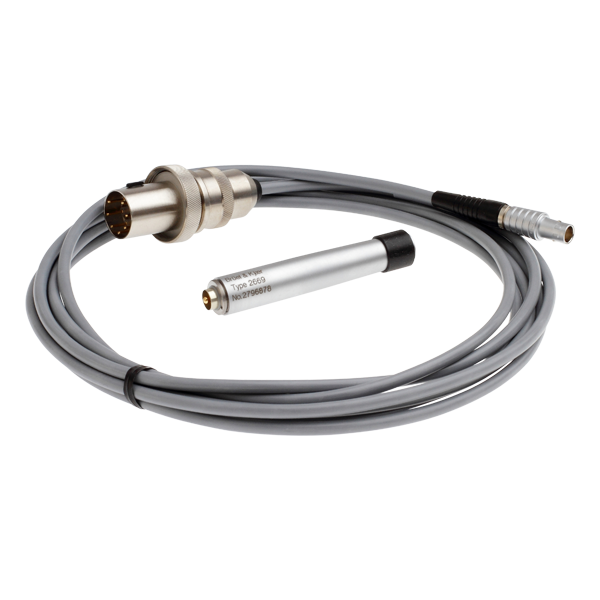 |
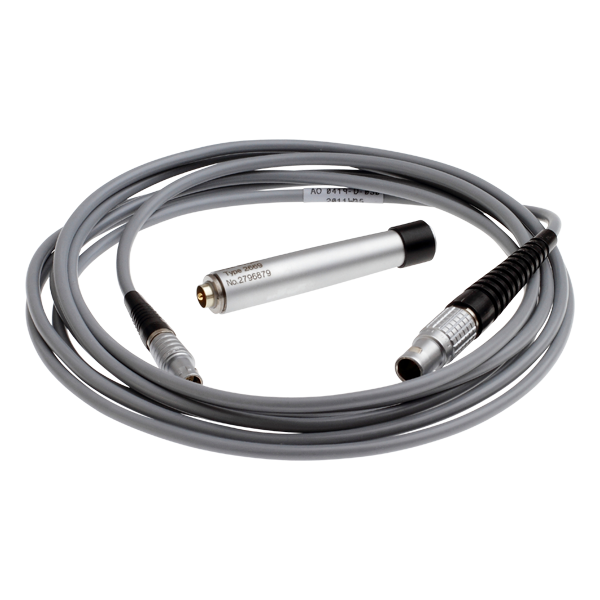 |
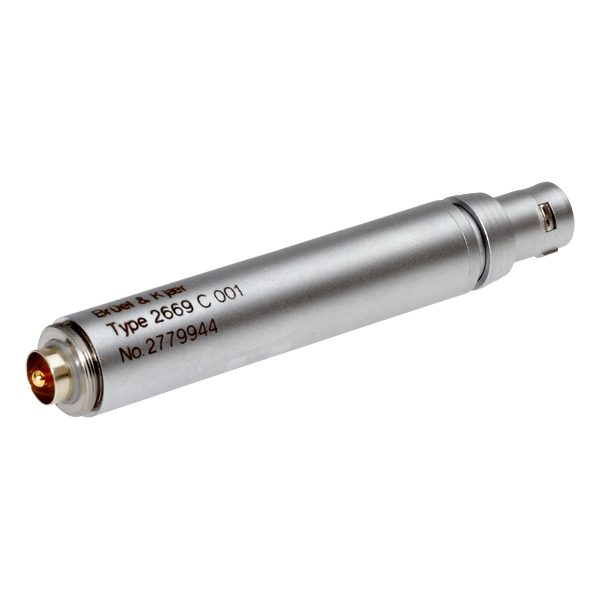 |
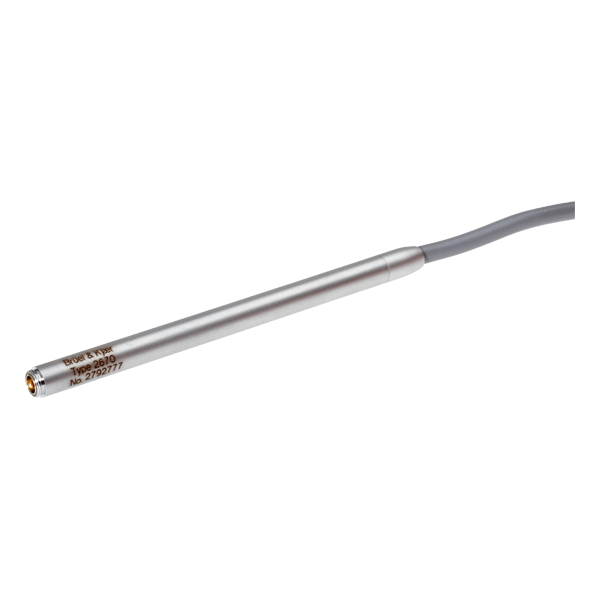 |
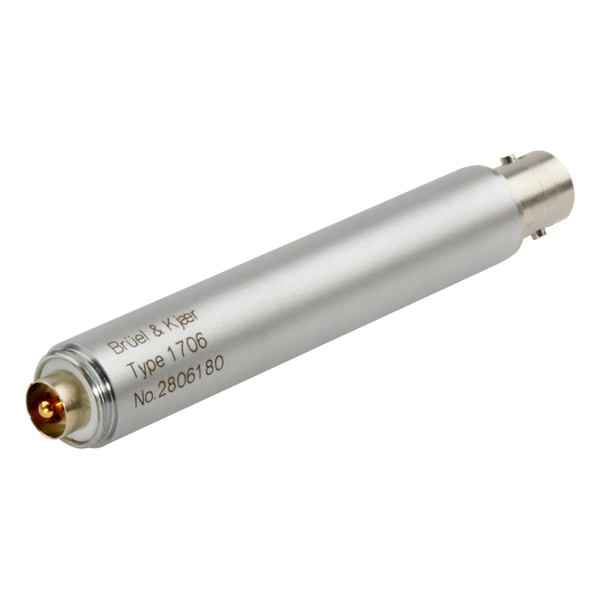 |
||
| Type No. | 2669-B | 2669-L | 2669-C | 2670 | 1706 | |
| Diameter | inch | 1/2 | 1/2 | 1/2 | 1/4 | 1/2 |
| Optimized | Acoustical* | Acoustical | Cylindrical | Phase | CCLD | |
| Connector at Preamplifier | LEMO 0B, 7‐pin | LEMO 0B, 7‐pin | LEMO 1B, 7‐pin | Fixed (2 m) | BNC | |
| Connector at Instrument/Cable | B&K, 7‐pin | LEMO 1B, 7‐pin | None | LEMO 1B, 7‐pin | N/A | |
| Calibration Facility | CIC | CIC | CIC | CIC | None | |
| Polarization Voltage Support | Yes | Yes | Yes | Yes | No | |
| Supply Voltage | V | ±14 to ±60 or 28 to 120 |
±14 to ±60 or 28 to 120 |
±14 to ±60 or 28 to 120 |
±14 to ±60 or 28 to 120 |
28 |
| Max. Output Voltage (Peak) | V | 55 (5 below supply) |
55 (5 below supply) |
55 (5 below supply) |
55 (5 below supply) |
7 |
| Max. Output Current (Peak) | mA | 20 | 20 | 20 | 20 | 19 |
| Frequency Range | Hz | 3 to 200000 ±0.5 dB (15 pF) |
3 to 200000 ±0.5 dB (15 pF) |
3 to 200000 ±0.5 dB (15 pF) |
15 to 200000 ±0.5 dB (6.2 pF) |
20 to 50000 ±2 dB (12 pF) |
| Attenuation | dB | <0.35 | <0.35 | <0.35 | <0.4 | <0.35 |
| Noise A‐weighted, typical | µV | 1.9 | 1.9 | 1.9 | 4 | 4 |
| Noise 22.4 Hz to 300 kHz, typical | µV | 8.2 | 8.2 | 8.2 | 14 | 15 |
| Input Impedance | GΩ || pF | 15 || 0.3 | 15 || 0.3 | 15 || 0.3 | 15 || 0.25 | 6 || 0.5 |
| TEDS UTID | 1025 from serial number 2221155 |
1025 from serial number 2221155 |
1025 from serial number 2221155 |
1025 from serial number 2248944 |
1025 from serial number 2264319 |
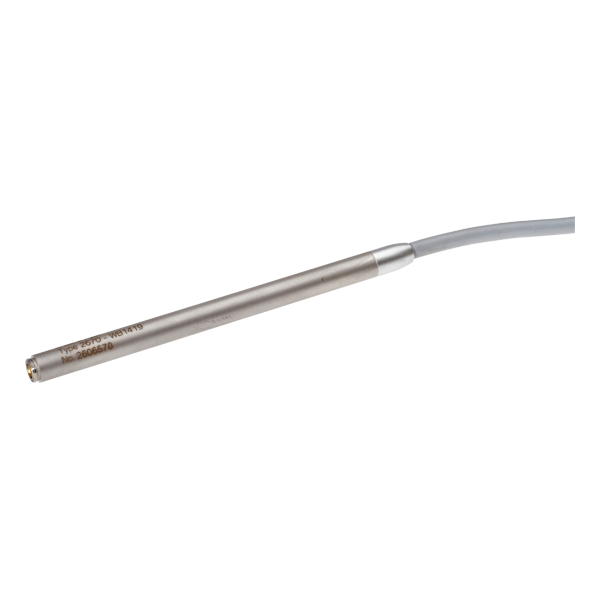 |
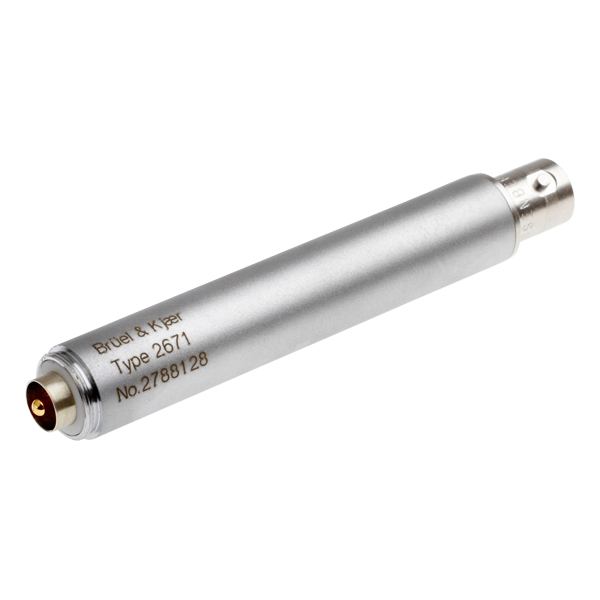 |
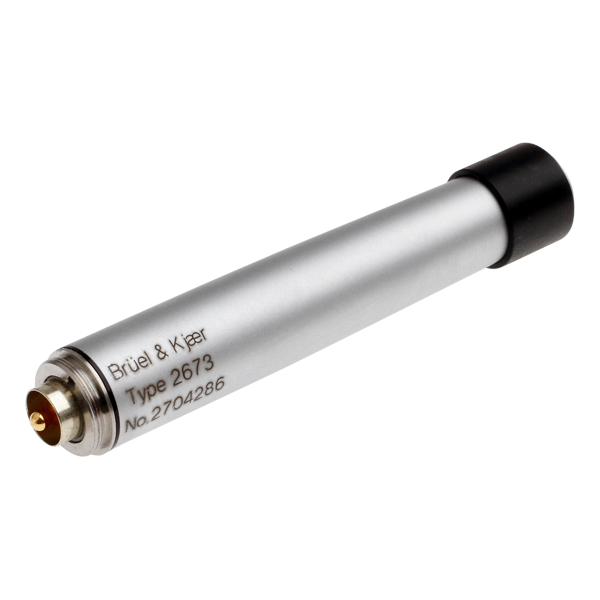 |
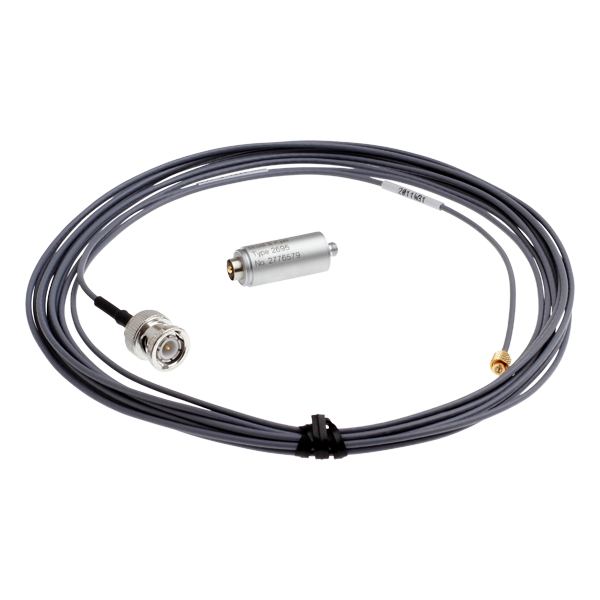 |
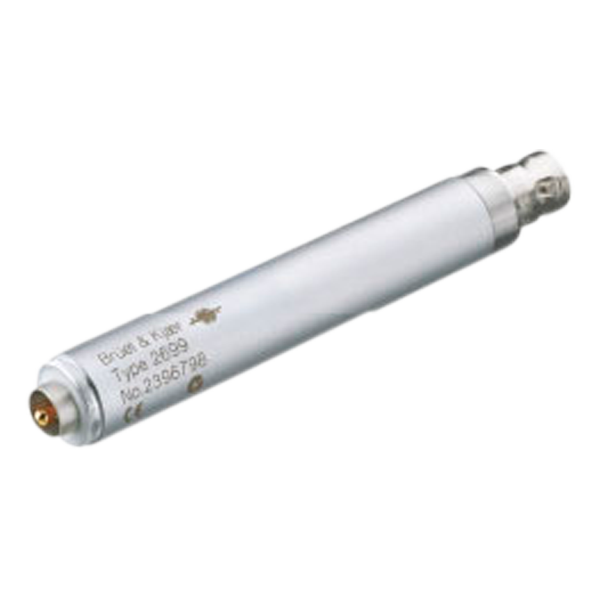 |
||
| Type No. | 2670-WB-1419 | 2671 | 2673 | 2695 | 2699 | |
| Diameter | inch | 1/4 | 1/2 | 1/2 | 1/2 | 1/2 |
| Optimized | Airbag | CCLD | Calibration | Short CCLD | CCLD | |
| Connector at Preamplifier | Fixed (2 m) cable | BNC | LEMO 0B, 7‐pin | 10–32 UNF | BNC | |
| Connector at Instrument/Cable | LEMO 1B, 7‐pin | N/A | LEMO 1B, 7‐pin | N/A | N/A | |
| Calibration Facility | None | None | IVC | 10–32 UNF | BNC | |
| Polarization Voltage Support | Yes | No | Yes | No | No | |
| Supply Voltage | V | ±14 to ±60 or 28 to 120 |
28 | ±14 to ±60 or 28 to 120 |
28 | 28 |
| Max. Output Voltage (Peak) | V | 55 (10 below supply) |
7 | 55 (10 V below supply) |
7 | 7 |
| Max. Output Current (Peak) | mA | 20 | 19 | 19 | 19 | 18 |
| Frequency Range | Hz | 1 to 100000 ±1 dB (6.2 pF) |
20 to 50000 ±2 dB (12 pF) |
3 to 200000 ±0.5 dB (20 pF) |
20 to 50000 ±2 dB (15 pF) |
A‐weighted to IEC 61672 Class 1 |
| Attenuation | dB | 11 | <0.35 | <0.05 | <0.2 | 0, ±0.3 dB at 1 kHz |
| Noise A‐weighted, typical | µV | 4 | 4 | 1.8 | 4 | 8 Max., LIN |
| Noise 22.4 Hz to 300 kHz, typical | µV | 14 | 15 | 11 | 12 | N/A |
| Input Impedance | GΩ || pF | 15 || 15 | 1.5 || 0.4 | 1 || 0.05 | 1.7 || 0.4 | 10 +20 to 40% || 0.5 |
| TEDS UTID | 1025 from serial number 2264319 |
1025 from serial number 2264319 |
No | 1025 | 1025 |
WANT TO KNOW MORE?
For further details of the range, availability, and price, please use the link below to get in touch with your local Brüel & Kjær representative.

Parla oggi stesso con il tuo rappresentante locale Brüel & Kjær!

